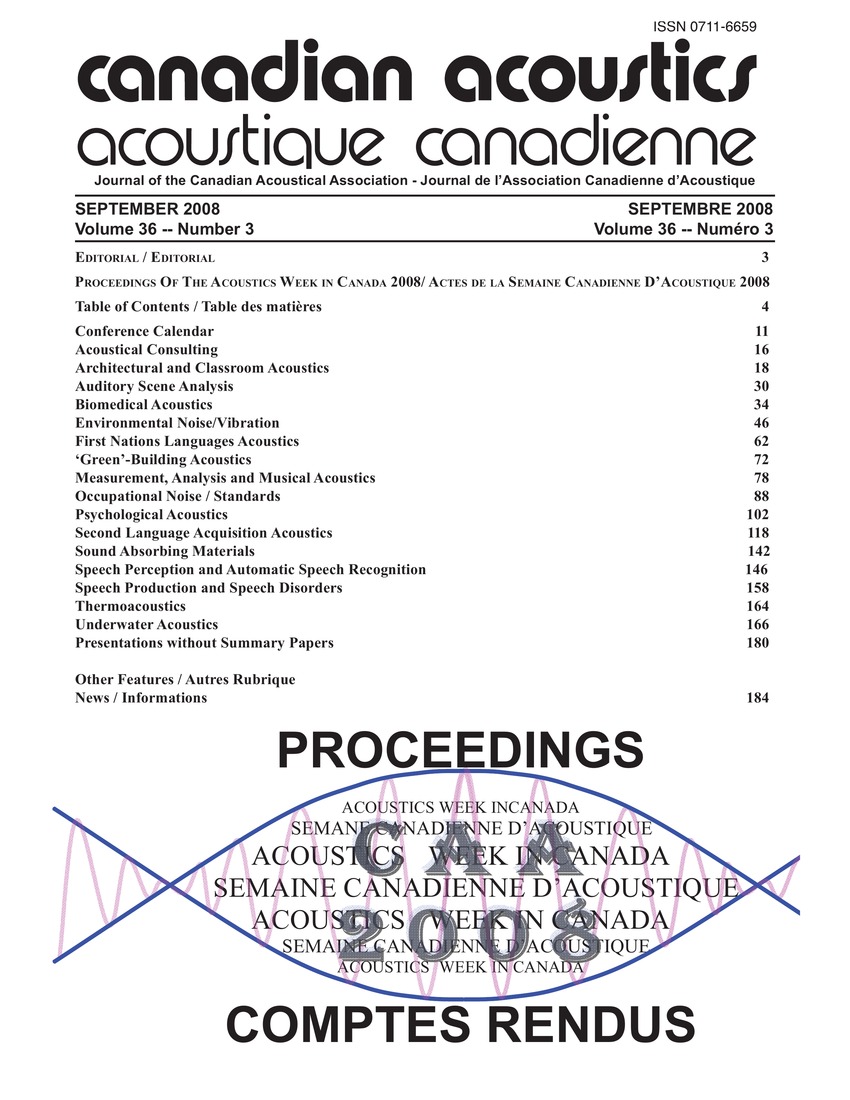A formant frequency estimator for noisy speech based on correlation and cepstrum
Keywords:
Correlation methods, Curve fitting, Natural frequencies, Speech, Speech analysis, Transfer functions, Accurate, Adverse effects, AR systems, Cepstral domains, Cepstrum, Correlation domains, Formant estimations, Formant frequencies, Least squares optimization techniques, Natural speeches, Noisy conditions, Noisy environments, Noisy observations, Noisy speeches, Observation noisesAbstract
A formant estimation scheme combining the advantageous features of correlation and cepstral domains, which is capable of handling the adverse effect of observation noise was investigated. A residue-based least squares optimization technique based on a model-fitting approach was introduced in order to obtain formant frequencies from noisy observations. Simulations were carried out to estimate formant frequencies from synthetic and natural speech signals under noisy conditions. The human vocal-tract system was represented by a P-th order AR system with a transfer function. A formant frequency estimation scheme based on a new ramp cepstrum model was developed which is capable of efficiently handling the noisy environment. The once-repeated ACF was employed which can significantly reduce the effect of noise in the correlation domain. It was observed that the proposed method provides an accurate formant frequency estimate even at a low level of SNR.Additional Files
Published
How to Cite
Issue
Section
License
Author Licensing Addendum
This Licensing Addendum ("Addendum") is entered into between the undersigned Author(s) and Canadian Acoustics journal published by the Canadian Acoustical Association (hereinafter referred to as the "Publisher"). The Author(s) and the Publisher agree as follows:
-
Retained Rights: The Author(s) retain(s) the following rights:
- The right to reproduce, distribute, and publicly display the Work on the Author's personal website or the website of the Author's institution.
- The right to use the Work in the Author's teaching activities and presentations.
- The right to include the Work in a compilation for the Author's personal use, not for sale.
-
Grant of License: The Author(s) grant(s) to the Publisher a worldwide exclusive license to publish, reproduce, distribute, and display the Work in Canadian Acoustics and any other formats and media deemed appropriate by the Publisher.
-
Attribution: The Publisher agrees to include proper attribution to the Author(s) in all publications and reproductions of the Work.
-
No Conflict: This Addendum is intended to be in harmony with, and not in conflict with, the terms and conditions of the original agreement entered into between the Author(s) and the Publisher.
-
Copyright Clause: Copyright on articles is held by the Author(s). The corresponding Author has the right to grant on behalf of all Authors and does grant on behalf of all Authors, a worldwide exclusive license to the Publisher and its licensees in perpetuity, in all forms, formats, and media (whether known now or created in the future), including but not limited to the rights to publish, reproduce, distribute, display, store, translate, create adaptations, reprints, include within collections, and create summaries, extracts, and/or abstracts of the Contribution.


